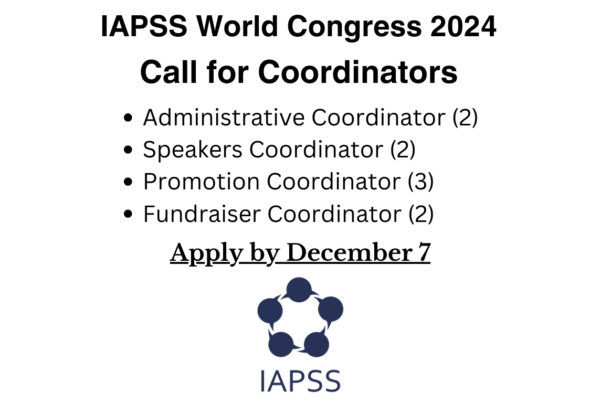In summer 2021, IAPSS partnered with the ASEAN Youth Organization-India on a youth policy brief workshop where participants developed policy proposals to improve conditions for youth. The winning policy brief is provided below. The views expressed in the policy brief are those of the participants alone.
Structural Violence on Women in Educational Spaces
Authors: Aditi Vasudevan, Purvi Narayan, Shahrunif Binti Edi, Inka Julia Riandamayanti
Introduction/Background
Education has been found to be key in improving one’s socio-economic position; and overall quality of life. As per the 2020 HDI report, there is a difference of 3.3 years between men and women in the mean years of schooling. In comparison, Bangladesh had a difference of only 0.8 years. The gender gap in education must be reduced for more skilled workers in our economy, while simultaneously allowing women greater independence and employment in the formal employment sector. The Indian government, both central and state, have multiple schemes that focus on this problem; which largely offer financial incentives to continue girl child education. However, the main challenge remains the social sphere, and its inherit misogyny. The most practical solution, that also allows for more equitable access, is the strengthening of the government run/aided educational institutes in the country. This would include-
- An increase in the number of government girl’s schools- with an emphasis on those districts/states where the gender parity is higher (this could be achieved by conversion of some government boy’s schools).
- Improved infrastructure, especially with relation to sanitation facilities
- Vocational counselling in schools
- Introduction of more women’s colleges at district-level
- Avenues for part-time work while studying in colleges
- At local levels, involvement of local community in parts of the school- especially as teachers.
Policy Alternatives/Statements
- Overhauling current public education system to focus more on girls
- Creation of girls-only spaces in education
- Creation of avenues for financial independence after school
Analysis
- It is a well-established fact that boys are more likely to attend private
schools, as parents are more willing to pay for their education (HRD
ministry, 2018). Therefore, it is vital that girls are supported by state-run
education systems, which are free. - Intersectionality also plays an important role in this problem (HRD ministry, 2018). Strengthening government schools accounts for disparities in economic status, caste and region. Involvement of the local community as teachers will also prevent any alienation from their background, as well as any discrimination they may face. Adequate representation of various communities is key, and possible considering the vast surplus in teachers in India (HRD ministry, 2018).
- It is key for the education to be based on skill-improvement and overall employability, to give women financial independence. This creates a space for them to confront their social circumstances. Interestingly, it was
found that women who are literate are more likely to be unmarried (Ministry of Women and Child welfare, 2016). - Women are less likely to be involved in STEM (Sahini 2011). Improving access to these fields in key to realise the potential of India’s women
- Improving key aspects of infrastructure also reduces drop-outs due to reasons such as menstruation. It has been found that around 23 million girls drop out due to the onset of menarche in India (NDTV 2018). Access to clean toilets and menstrual supplies is instrumental in reducing these drop out rates.
- While this policy will require more financing, it will not cause massive budget reform, as existing facilities are being restructured to support women.
Requested Policy Action
- Set up committees to identify which schools can modified to girl’s only schools- and which regions require more attention
- Expenditure on sanitation facilities and vocational training
- Working with local panchayats to address local problems
- Identifying remote regions where current public education systems do not exist
- Sensitization of teachers and principles on caste/class discrimination and social taboos such as menstruation.
References
Sahani R and Shankar VK, “Girls’ Higher Education in India on the Road to Inclusiveness: on Track but Heading Where?” 63 Higher Education <https://www.jstor.org.eresources.nls.ac.in/stable/pdf/41343620.pdf?ab_segments=0%252Fbasic_search_gsv2%252Fcontrol&refreqid=excelsior%3Ad6058d88be27f8c78e5bbe546f5e2966>
Dutta S, “23 million Women Drop out of School Every Year When They Start Menstruating in India: Women’s DaySa” (NDTVMay 28, 2018)<https://swachhindia.ndtv.com/23-million-women-drop-out-of-school-every-year-when-they-start-menstruating-in-india-17838/> accessed August 28, 2021
HDR UNDP, “Human Development Report 2020: Undp HDR” (Human Development Report 2020 | UNDP HDR2020)
<http://report.hdr.undp.org/index.html> accessed August 28, 2021
Government of India Mof HRD, “Educational Statistics at a Glance” (ESAG 2018) <https://www.education.gov.in/sites/upload_files/mhrd/files/statistics-new/ESAG-2018.pdf> accessed August 28, 2021





